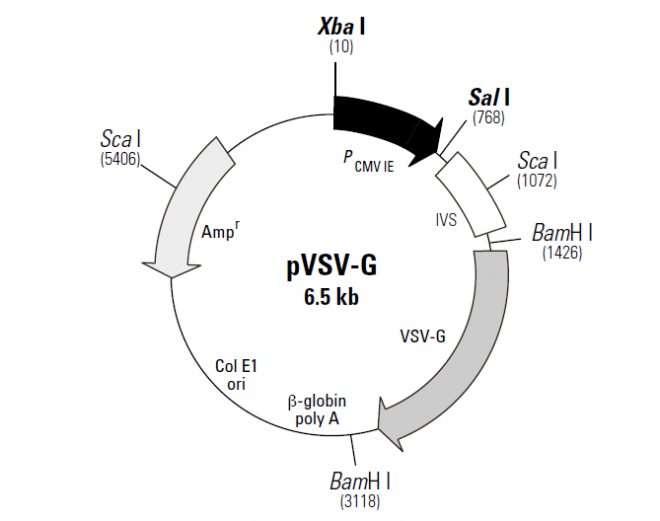pVSV-G 载体
pVSV-G expresses the G glycoprotein of the vesicular stomatitis virus (VSV-G) under the control of the CMV immediate-early promoter (1). VSV-G is used in pseudotyping of Moloney Murine Leukenia Virus (MMLV)-based retroviral vectors by mediating viral entry. VSV-G interacts with phospholipid components of the target cell membrane and fosters the fusion of viral and cellular membranes (2). VSV-G does not require a cell surface receptor and can serve as a surrogate viral envelope protein. pVSV-G Vector includes IVS, a synthetic intron known to enhance the stability of the mRNA (3), the Col E1 origin of replication and bacterial ampicillin rsistance (Ampr) gene for propagation and antibiotic selection in bacteria.
载体应用
As part of the Retro-X™ Universal Retroviral Expression System (Cat. No. 631530), pVSV-G is cotransfected with a retroviral expression vector into the GP2-293 Packaging Cell Line (4) to produce infectious, replication-incompetent retrovirus. The genes encoding the viral gag and pol proteins are stably integrated into GP2-293. Because the VSV-G envelope protein causes toxicity by fusing cellular membranes, it must be expressed transiently from pVSV-G during packaging (5). Although the resulting virus can infect target cell lines and transmit a gene-of-interest, it cannot replicate because target cell lines lack the viral structural and polymerase/integrase genes. The separate introduction and integration of the viral genes into the packaging cell line and the use of minimal viral sequences in the vector minimize the chance of producing replication-competent virus due to recombination events.


